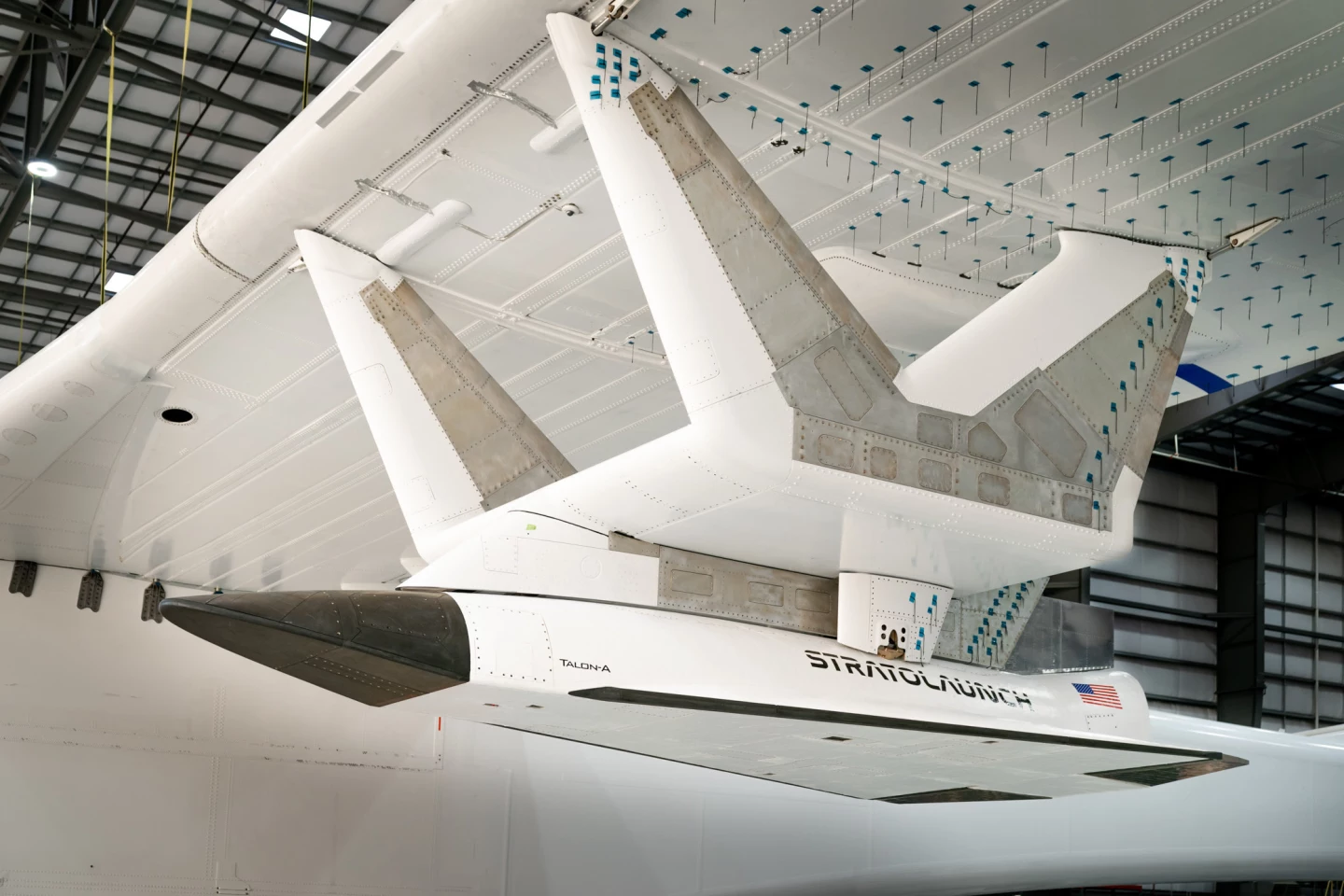Aerospace company Stratolaunch has bold plans to launch swift and repeatable hypersonic flights from its massive Roc carrier aircraft, and has now taken an important step forward with these ambitions. The plane’s latest outing saw a hypersonic test vehicle integrated into its center wing pylon for a maiden captive carry flight, with the company now planning a separation test in the near future.
With side-by-side fuselages and a wingspan of 385 ft (117 m), the Roc aircraft is the world’s largest plane and last week’s test flight was its eighth flight overall. Stratolaunch plans to use the plane as a carrier aircraft to release smaller vehicles from its center wing pylon, which would be used to carry out research on hypersonic flight.
Called Talon-A, the vehicle was revealed in 2020. The idea is to have Roc carry this into the sky and release it from the air, seeing it travel at speeds in excess of Mach 5 and at altitudes of 35,000 ft (10,000) before landing autonomously on a runway. An unpowered version of this, called TA–0, was then revealed earlier this year, which Stratolaunch is using to test out the release system on the Roc’s belly.

The successful captive carry flight took place over the Mojave desert last Friday, with the TA-0 integrated with the Roc’s center wing pylon. The flight lasted just over five hours and reached an altitude of 23,000 ft (7,000 m), providing Stratolaunch with valuable data on the aerodynamic loads.
"We have conducted a variety of ground tests in anticipation of this first captive carry flight, and with each successful test milestone achieved we have built confidence that the hardware will perform exactly as it was designed,” said Dr. Zachary Krevor, Stratolaunch CEO. “It's exhilarating to see the team's hard work come to life and see the vehicles fly as an integrated system.”
Roc landed at 1:29 p.m. and our team is busy analyzing the data gathered during today’s flight! pic.twitter.com/JIF0Q94WJe
— Stratolaunch (@Stratolaunch) October 28, 2022
From here, Stratolaunch plans to carry out further captive carry test flights in the coming months. Before the end of the year, it plans to test out the release mechanism by letting go of the TA-0 vehicle in mid-air over the Pacific Ocean. Meanwhile, it is continuing the testing and development of the Talon hypersonic vehicle with a view to offering commercial flights in 2023.
"Testing and production are accelerating as we push forward to meet our commitment of providing hypersonic flight test service to our customers next year. Our team will continue accomplishing more complex test milestones as we progress to our first hypersonic flight," Dr. Krevor said.
Source: Stratolaunch via PRNewswire





